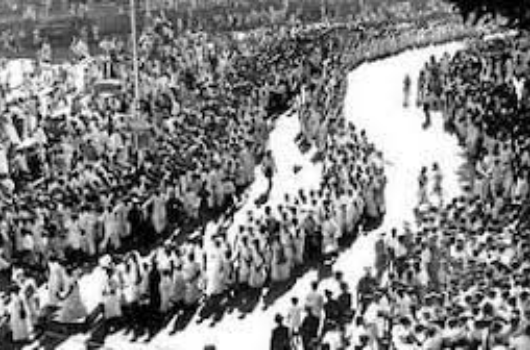


On 8 August 1942 at the All-India Congress Committee session in Bombay, Mohandas Karamchand Gandhi launched the 'Quit India' movement. The next day, Gandhi, Nehru and many other leaders of the Indian National Congress were arrested by the British Government. Disorderly and non-violent demonstrations took place throughout the country in the following days.
By the middle of 1942, Japanese troops were approaching the borders of India. Pressure was mounting from China, the United States and Britain to solve the issue of the future status of India before the end of the war. In March 1942, the Prime Minister dispatched Sir Stafford Cripps, a member of the War Cabinet, to India to discuss the British Government's Draft Declaration. The draft granted India Dominion status after the war but otherwise conceded few changes to the British Government Act of 1935. The draft was unacceptable to the Congress Working Committee who rejected it. The failure of the Cripps Mission further estranged the Congress and the British Government.
Gandhi seized upon the failure of the Cripps Mission, the advances of the Japanese in South-East Asia and the general frustration with the British in India. He called for a voluntary British withdrawal from India. From 29 April to 1 May 1942, the All India Congress Committee assembled in Allahabad to discuss the resolution of the Working Committee. Although Gandhi was absent from the meeting, many of his points were admitted into the resolution: the most significant of them being the commitment to non-violence. On 14 July 1942, the Congress Working Committee met again at Wardha and resolved that it would authorize Gandhi to take charge of the non-violent mass movement. The Resolution, generally referred to as the 'Quit India' resolution, was to be approved by the All India Congress Committee meeting in Bombay in August.